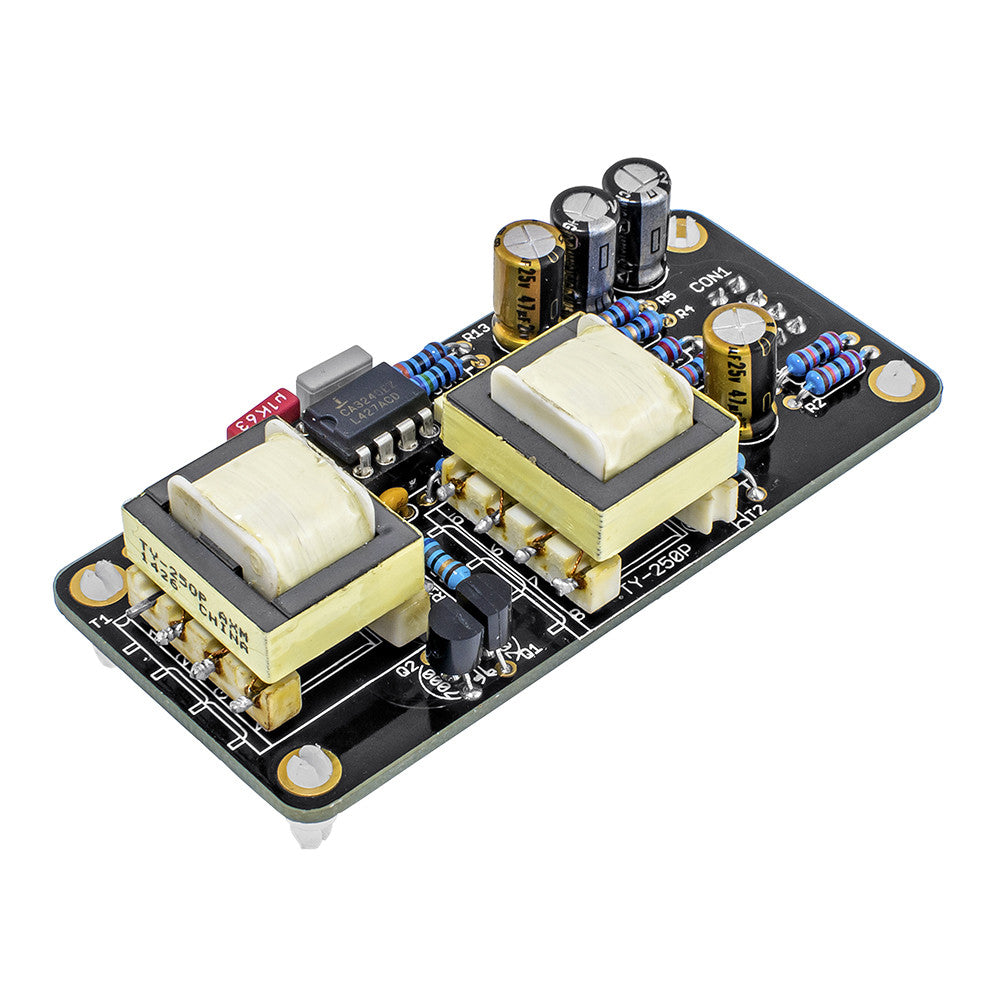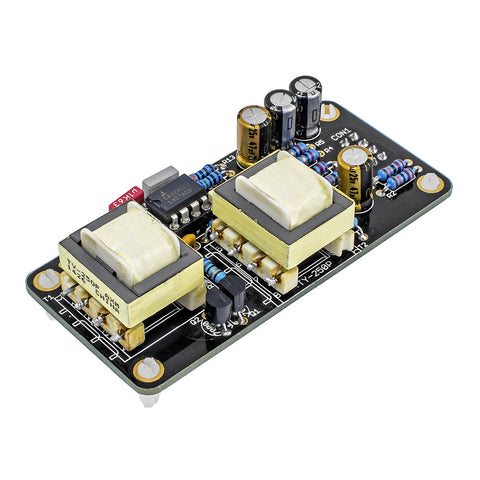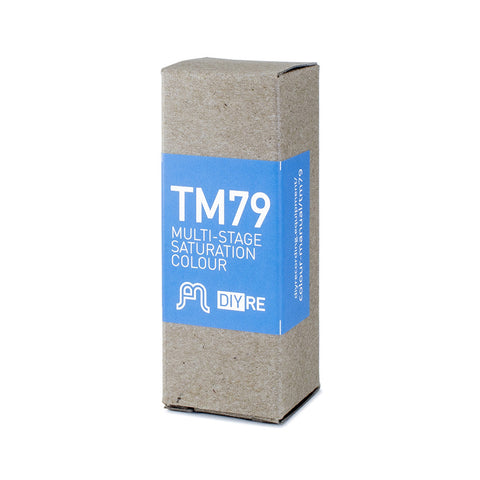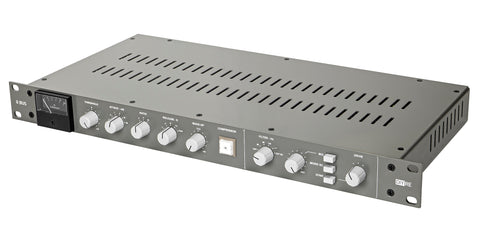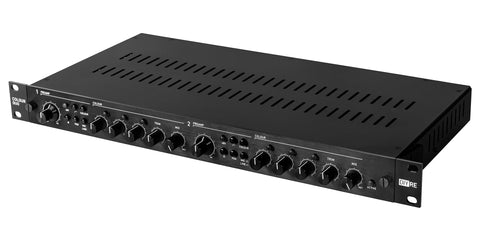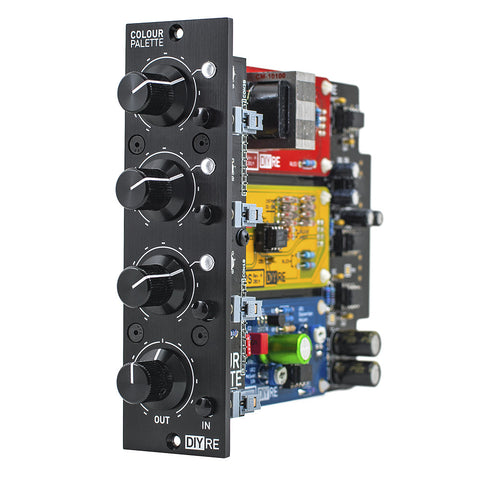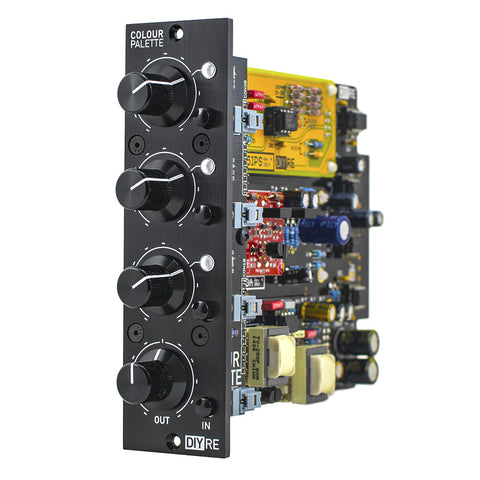Eisen Audio
TM79 Multi-Stage Saturation Colour
$75.00
- Full Kit
- Step-by-Step Guide
- Supported
- $50 Repair Policy
- Beginner
Eisen Audio is a Brooklyn-based, high-end audio design firm whose credits include the DIY500 preamp and designs for Purple Audio, AwTAC, and NonLinearAudio. The TM79 is a new analog saturation design from Eisen released exclusively for the Colour format. Instead of attempting to replicate a particular vintage design, the TM79 draws its inspiration from various technologies and textures found on classic records of the 1970s. Every component and circuit element has been carefully chosen by ear in pursuit of "That 70's Tone."
Features
- Compatible with the Colour 500-Series Palette
- Black, nickel/gold-plated PCB
- Designed by Jens Jungkurth of Eisen Audio
What the Pros are Saying

"The Eisen Audio TM79 ... was one that I kept coming back to. It does clever pre and post-emphasis filtering that results in nice, usable multiband saturation. For example, it crunches up vocals nicely but leaves sibilant esses in check."
-Scott Evans
TapeOp Magazine
Design Notes
Once upon a time I bought a 3M M79 tape machine, chasing - however foolishly - that "crushed" sound that I admired on Stones' mobile truck albums. While enabling the obvious contribution of tape formula and tape compression, the record/repro electronics in that machine produced their own excitingly colorful effect which, if you ask me, was just as significant. M79 I/O transformers were big and fairly well behaved, but those beyerdynamic "peanut" transformers back to back surrounding the tape heads were undersized and overloaded easily, with a really "squeezed" and "tough" kind of response. This exploitation of transformer saturation for rock 'n roll enhancement is what inspired me to call my company "iron" audio ("eisen" when translated to German).
Another feature of the M79 multi-track was 3M Mincom's first non-discrete audio electronics. Indeed, M79 cards employed a selection of 741-derrived IC op amps. Although I loved the tone of that signal path I did not at first identify this aspect of its construction as special, nor beneficial. However, after a decade of discrete transistor exploration, I have come to the opinion that (given the right die and implementation) primitive monolithic amps can possess a sort of "attitude" which is uniquely desirable, and - I think - added another layer of grit to so many great 70s albums.
One such album that has always inspired me, sonically (texturally), is The Cars S/T, which peaked on the charts in 1979. I believe it was recorded by the great Roy Thomas Baker using 3M machines (presumably M79) and a massive Neve AIR console (which also made great use of IC amps coupled with so many more transformers). I am told that RTB would arrive at the studio a day early, play a reel of familiar drum tracks, and experiment with overdriving various permutations of console gain staging (i.e. "how does it sound if I crank this channel into group 1 and then back off at the remix assign?") until he got just the right kinds/amounts of distortion and "colour". Personally, I have found that this sort of deliberate clipping can facilitate a consistent and reasonable level, with a "rich" "finished" tone, to be printed on the first pass, without resorting to compressors/limiters later on. It was once, arguably, the method of pop music recording, whether intended or not, and is an approach that I keep in mind whenever I'm designing a new piece of gear: that clipping will inevitably happen, and had better sound musically-relevant when it does.
The TM79 Colour circuit was not copied from an 3M M79, nor lifted from the AIR console, nor derived from any specific piece of gear that I know of. Rather, it is a careful combination of distortion techniques that I've devised while contemplating why the aforementioned equipment sounds so good. TM79 is presented as an homage, obtaining similar results through concise means.
Actual TM79 realization can be broken down as follows:
- Stage 1 of 3: The first half of an Intersil CA3240EZ dual mosfet-input IC op amp is configured as a differentiator, attempting to boost 6dB/octave all frequencies above ~4kHz until it runs out of gain-bandwidth.
- Stage 2 of 3: A tiny (20mW) 1k:250Ω steel-core transformer from Triad Magnetics, driven by stage 1, steps down to a very heavy load of 68Ω , in parallel with two discrete mosfets configured as a passive clipper. A second identical transformer, in reverse, then steps back up to interface with stage 3.
- Stage 3 of 3: The latter half of our Intersil CA3240EZ dual mosfet-input IC op amp is configured as an integrator, attempting to cut 6dB/octave all frequencies above ~17kHz until it fades into the noise floor.
For practical purposes, we can think of this 3-stage circuit as tape machine electronics: the pre-emphasis record EQ (HF boost) and de-emphasis repro EQ (HF cut), transformer coupled to their tape path in between. But of course there is no tape or tape heads here; we have a mosfet clipper in their place. And the surrounding EQ ensures that low frequency content isn't always the first to clip.
Other, less obvious shortcuts-to-distortion help add harmonic complexity and dynamic smoothing to the TM79 circuit. These include:
- The omission of end-stop resistors, meaning the pre-emphasis EQ boosts until it clips, turning the high end into a mess, while the de-emphasis EQ becomes a quasi-reciprocal low-pass filter, removing some of this "hash".
- Selecting an op amp which "sags" and "folds up nicely" when it tries to swing maximum amplitude, a condition which occurs prematurely in this application because the op amp is starved of output and feedback current drive by the directly coupled, low-Z, transformer load that it's ill-equipped to deal with.
- Employing back-to-back transformers with the following conditions: a steel core for magnetic hysteresis, a small size to reach saturation more easily, and a "ridiculous" load so that saturation and dynamic compression at nominal levels are guaranteed, with the useful byproducts of subtle rolloff at HF/LF extremes with low-level midrange "thickening" in between.
All component values and types, including the various series of capacitor, were auditioned and selected by ear. Equal attention was paid to indirect circuits aspects, such as power supply decoupling and ground compensation and common mode, because Eisen Audio believes there is no such thing as "outside the audio path" pertaining to an audio circuit.
Samples
Resources
- Schematic
- Assembly Guide v1.1 (current)
- Assembly Guide v1.0

